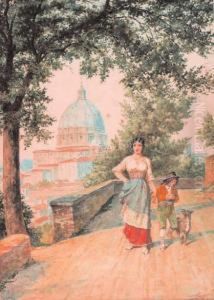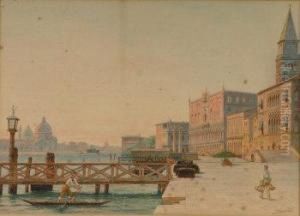Lemmo Rossi Scotti Paintings
Lemmo Rossi Scotti was an Italian painter who lived during the late 19th and early 20th centuries. Born in Piacenza, Italy, in 1848, he was part of a period in art history that saw significant transitions, with movements such as Impressionism, Post-Impressionism, and Symbolism emerging. Despite these international trends, Rossi Scotti's work was primarily rooted in the traditions of Italian painting, and he is often associated with the academic and historical painting traditions of his country.
Throughout his career, Rossi Scotti was known for his historical and genre paintings. He was adept at capturing the essence of Italian life and was particularly interested in scenes depicting moments from the Renaissance and other significant periods in Italian history. His works are characterized by careful attention to detail, a rich color palette, and a classical approach to composition and form.
Rossi Scotti received his artistic training at the Academy of Fine Arts in Parma and later continued his studies in Rome. His education in these historic centers of Italian art profoundly influenced his style and thematic choices. He was part of a generation of Italian artists who sought to preserve the classical and Renaissance heritage in their work, often looking back to the great masters of the past for inspiration. During his lifetime, his paintings were exhibited in various Italian cities and were well-received by critics and the public alike.
Despite the fact that Rossi Scotti's conservative approach to painting was at odds with the avant-garde movements that were gaining momentum throughout Europe, he maintained a successful career. His adherence to traditional methods and subjects did not prevent him from being recognized as a skilled painter who contributed to the cultural life of Italy during a time of great change.
Lemmo Rossi Scotti passed away in 1926. Today, his work is preserved in several Italian museums and collections, serving as a testament to his dedication to the historical and academic artistic values of his era. While he may not be as widely known as some of his contemporaries who embraced more modernist styles, his paintings remain an important part of the Italian artistic heritage, offering insight into the country's cultural and historical identity during the turn of the century.

